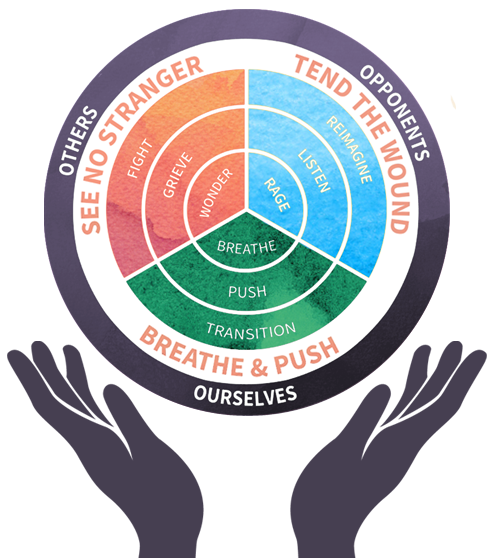1: Wonder

“Seeing no stranger begins in wonder. It is to look upon the face of anyone and choose to say: You are a part of me I do not yet know. Wonder is the wellspring for love… It is easy to wonder about the internal life of the people closest to us. It is harder to wonder about people who seem like strangers or outsiders. But when we choose to wonder about people we don’t know, when we imagine their lives and listen for their stories, we begin to expand the circle of who we see as part of us. We prepare ourselves to love beyond what evolution requires.”
“Wonder is where love begins, but the failure to wonder is the beginning of violence. Once people stop wondering about others, once they no longer see others as part of them, they disable their instinct for empathy. And once they lose empathy, they can do anything to them, or allow anything to be done to them. Entire institutions built to preserve the interests of one group of people over another depend on this failure of imagination.”
— Valarie Kaur, See No Stranger, Chapter 1 and Appendix
Understanding Wonder
A Practice of Love for Others
To wonder is to cultivate a sense of awe and openness to others’ thoughts and experiences, their pain, their wants and needs. It is to look upon the face of anyone or anything and say: You are a part of me I do not yet know. Wonder is an orientation to humility: recognizing that others are as complex and infinite to themselves as we are to ourselves. Wondering about a person gives us information for how to love them. You can practice wonder for all others – animals, trees, living beings, and the earth. Wonder gives you information for how to care for them. Wonder is the wellspring of love.
- What is your first memory of feeling wonderstruck? Notice where you were and what it was. Notice the felt-sense of awe in your body.
- What is your first memory of wondering about another person? Choose a moment that felt safe. Notice what openness and curiosity feels like in your body.
- How long has it been since you felt this? Maybe it’s a familiar sensation. If it’s rare, without judgment, notice the qualities of calling that feeling back into you.
- Let’s invite wonder into the present moment. Open your eyes, look around the room for the most for the most beautiful thing in your view. Choose something living, a plant, a pet, tree out your window, a face in a photograph. You are a part of me I don’t yet know. Notice what this feels like in your body
- How can the practice of wonder help us “see no stranger” and love others?
- What are the challenges of practicing wonder for others?
- What do we lose or risk by not wondering about others?
- What becomes possible for us and for our nation when we practice wonder and “seeing no stranger”?
- Begin a wonder practice. When you see faces on the street or screen or subway, say to yourself: “Sister, Brother, Sibling. Aunt. Uncle. My Child.” You can also say: You are a part of me I do not yet know. You can practice this with animals, trees, and the earth. In doing so, you are retraining your eye to see all others as part of you. You are creating an embodied sense of the truth of our interconnectedness. You are training yourself to see no stranger. It’s okay if biases arise in this practice. Return to the practice. Through conscious practice, we can change how we see.
- Write in your wisdom journal. Reflect on the words: You are a part of me I do not yet know. Notice when, and with whom, this feels easy and when it feels difficult. Ask yourself: What would it mean to move through every day with this way of being? How does that shape what you do? Invite your deep wisdom to speak to you.
- Create a “wonder box.” This is one way to practice cultivating the felt-sense of wonder in your body. Collect items that bring you wonder and put them in a box. Items like photos of travels, special gifts you received, rocks from the earth, shells from the ocean, feathers, and recorded birdsong. Through the week, return to the box to be reminded of the wonder that is all around you. Notice what wonder feels like in your body.
- Open yourself to stories you have not yet heard. You can explore the films and writings on this website. Hear more stories from sources like Humans of New York, StoryCorps, and The Moth. Practice conversations with others across differences with groups like Living Room Conversations and The People’s Supper. Learn about buried histories of marginalized peoples from sources like the Zinn Educational Project, Stamped from the Beginning (Ibram X. Kendi) and Voice of Witness.

